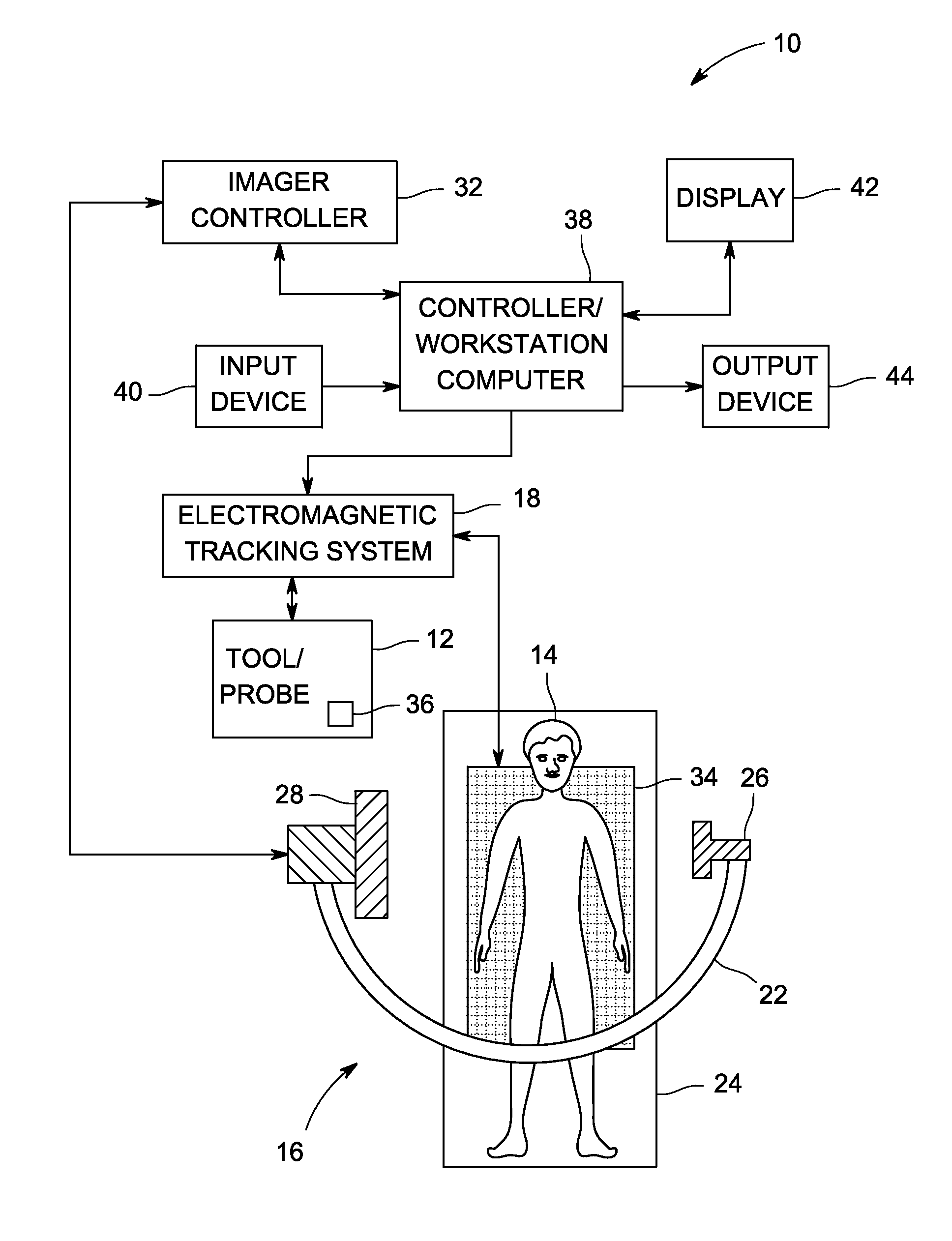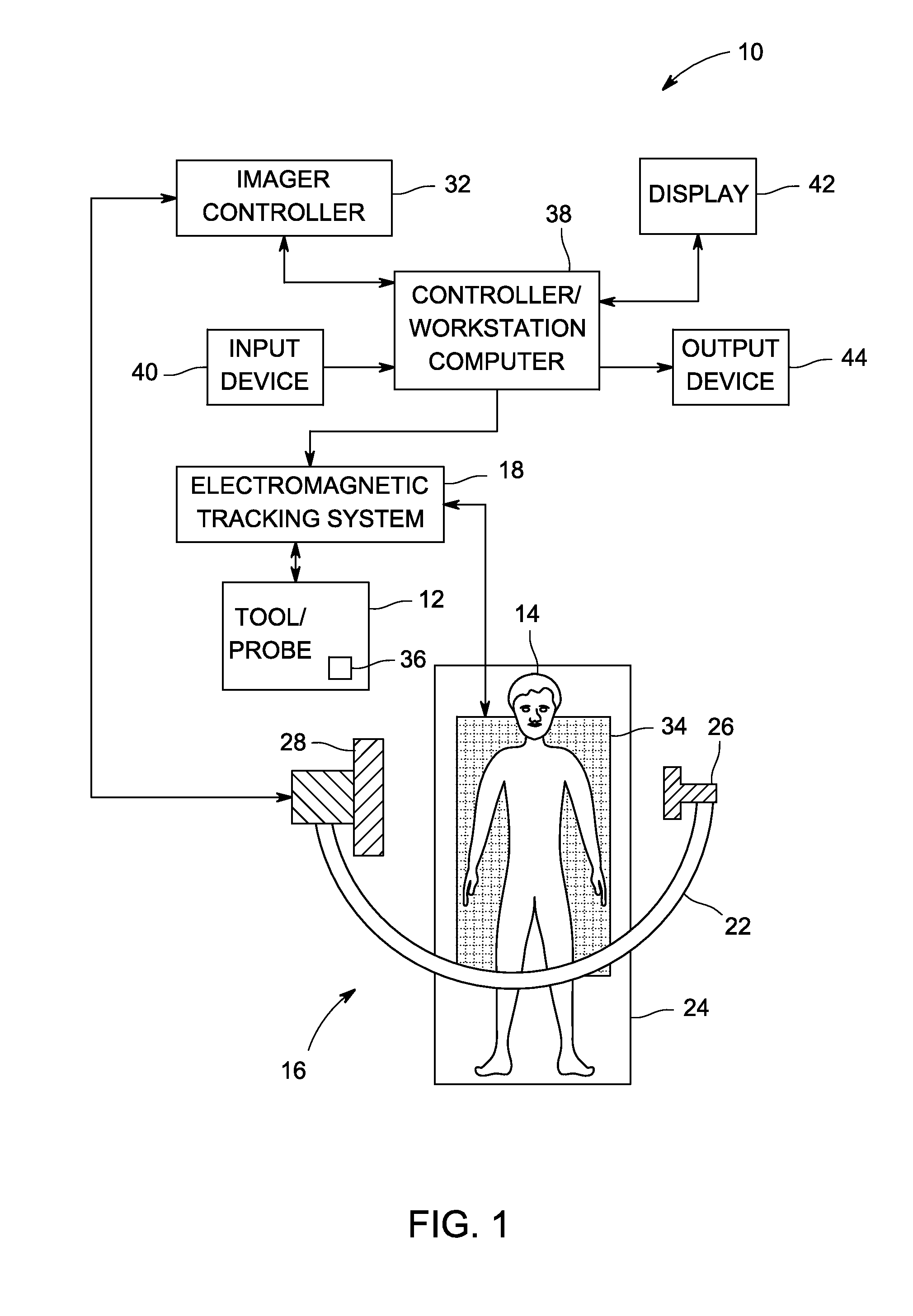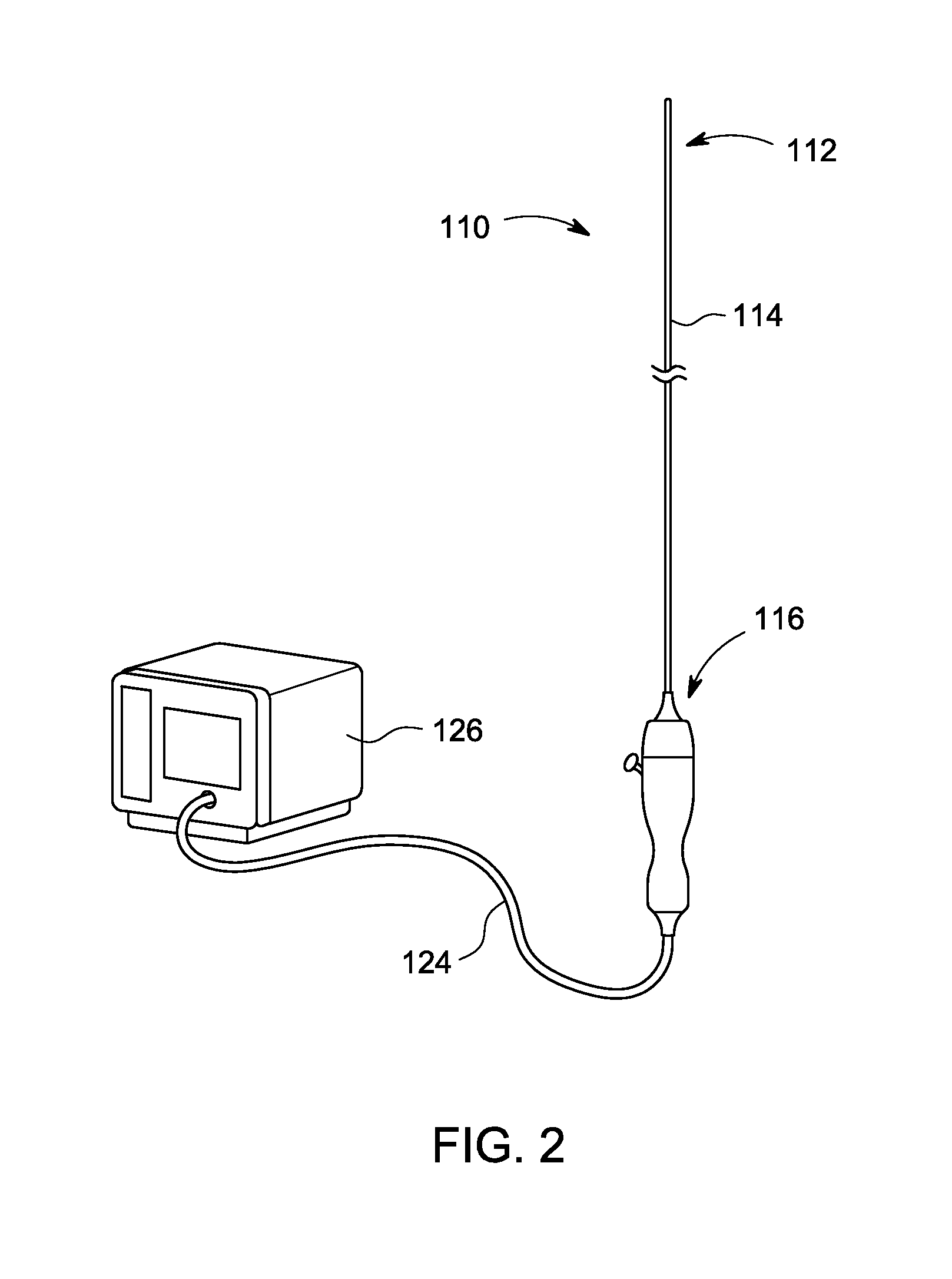System and method for processing navigational sensor data
a technology of navigation sensor and processing method, which is applied in the field of interventional or surgical navigation system, can solve the problems of system sensitive to calibration errors, calibration drift, and the increase in the noise of the measurement generated by such sensors
- Summary
- Abstract
- Description
- Claims
- Application Information
AI Technical Summary
Benefits of technology
Problems solved by technology
Method used
Image
Examples
Embodiment Construction
[0016]Various approaches are discussed herein for improving the processing algorithms, and systems implementing such algorithms, used in determining position and orientation information for a medical navigation system. By way of example, in one implementation the criterion that is minimized as part of the position and orientation determination is essentially independent of local electromagnetic field strength, thereby making the minimization operation independent of field strength calibration. Alternatively, such an approach may also allow for field strength calibration, including auto-calibration of the navigation sensor. In addition, noise performance of the navigation system may be improved by the approaches discussed herein.
[0017]With the preceding in mind, FIG. 1 illustrates an embodiment of a navigation system 10 suitable for tracking movement of a surgical or interventional tool or object 12 (e.g., a catheter, a laparoscope, and so forth) with respect to a patient 14. In the ...
PUM
 Login to View More
Login to View More Abstract
Description
Claims
Application Information
 Login to View More
Login to View More - R&D
- Intellectual Property
- Life Sciences
- Materials
- Tech Scout
- Unparalleled Data Quality
- Higher Quality Content
- 60% Fewer Hallucinations
Browse by: Latest US Patents, China's latest patents, Technical Efficacy Thesaurus, Application Domain, Technology Topic, Popular Technical Reports.
© 2025 PatSnap. All rights reserved.Legal|Privacy policy|Modern Slavery Act Transparency Statement|Sitemap|About US| Contact US: help@patsnap.com



